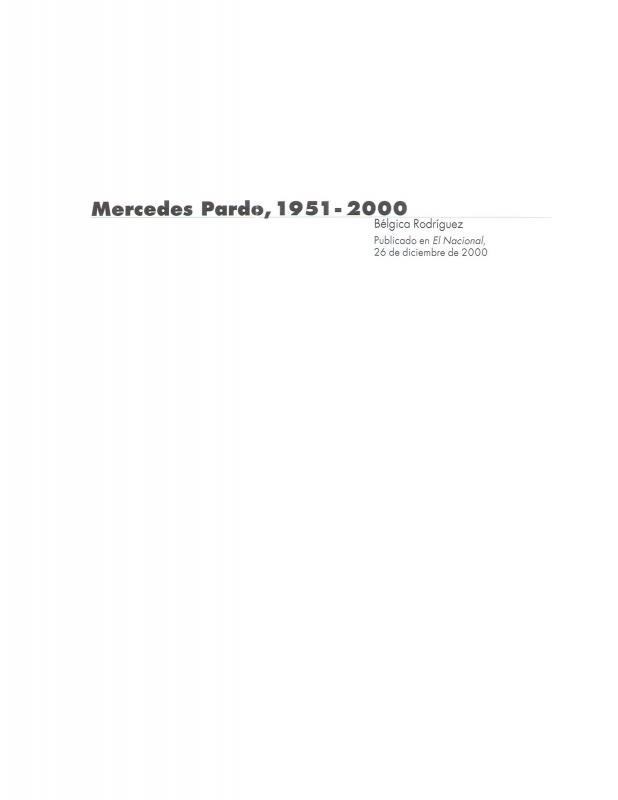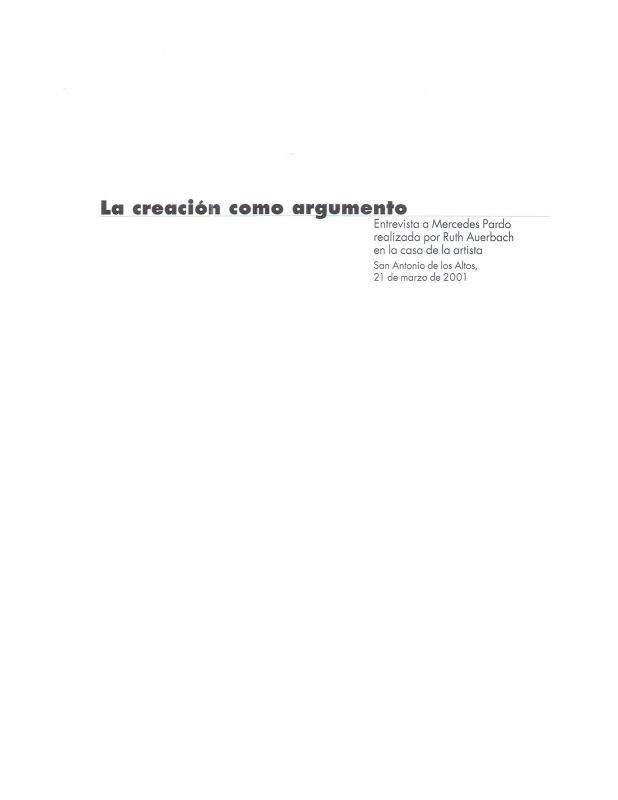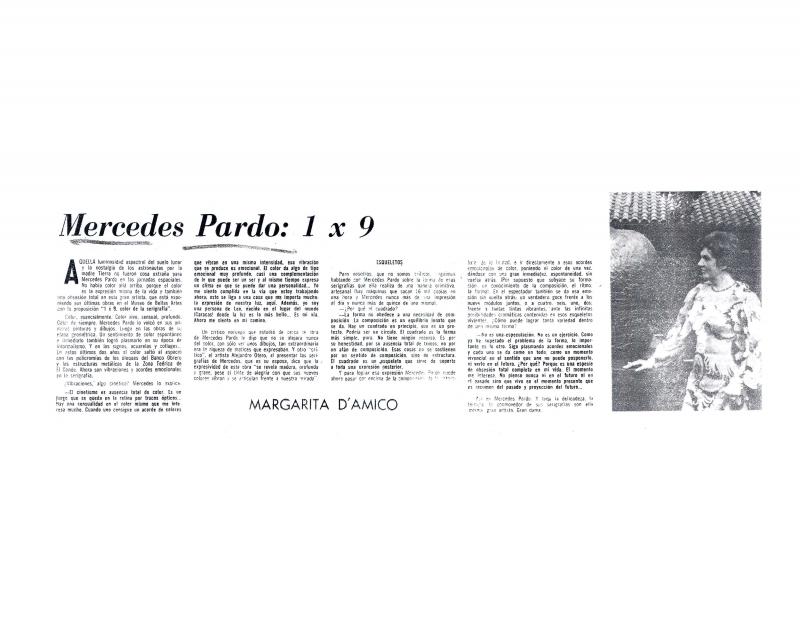In his article, Alejandro Otero (1921–90) claims that the most interesting aspect of this exhibition is the invention of chromatic relationships. Underscoring the value of color in silkscreen printing, he explains that his wife, the Venezuelan artist Mercedes Pardo (1921–2005), sought to highlight this feature by printing on Formica instead of paper. Otero starts his article by discussing the passion both he and Pardo feel for their art, and goes on to say that silkscreen works, and Pardo’s work in general, have influenced “the affirmation, continuity, and development of Venezuelan painting.” Hence Otero’s opinion that the most important aspect of the exhibition is the interplay of colors that explores the harmonic potential of color in modular form. In this article, Otero expresses his view of Pardo’s work, which he has observed at close quarters as it has evolved. Despite her painterly goals, Pardo produced her graphic works using graphic techniques, without attempting to judge them by painting standards. On the contrary, she takes advantage of the potential afforded by the (pure) color planes created by silkscreen inks to produce works in which color plays a leading role.
For additional information on this artist, see Bélgica Rodríguez’s critical essay published in 2001 “Mercedes Pardo: 1951–2000” [doc. no. 1143027]. To read other articles about Pardo’s work, see Ruth Auerbach’s interview “La creación como argumento” [doc. no. 1143060]; the article by Roberto Guevara “Color y módulos en Mercedes Pardo” [doc. no. 1155991]; and Margarita D’Amico’s interview “Mercedes Pardo: 1 x 9” [doc. no. 1155959].




